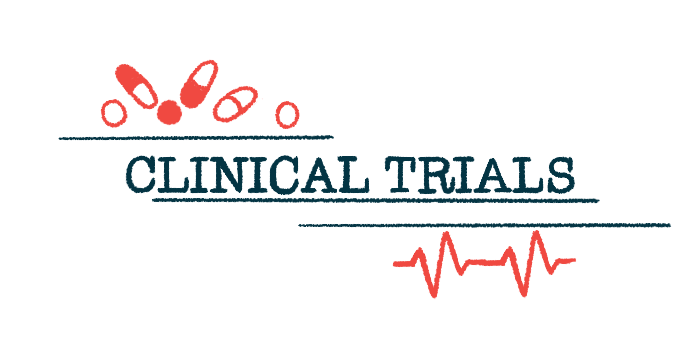Crovalimab protects red blood cells, eases fatigue of PNH in Phase 3 trial
COMMODORE 3 study also supports safety of at-home injection therapy

Treatment with crovalimab, an experimental under-the-skin injection therapy, effectively prevented red blood cell death, reduced the need for blood transfusions, and eased fatigue in adults and adolescents with paroxysmal nocturnal hemoglobinuria (PNH).
That’s according to a primary analysis of data from the Phase 3 COMMODORE 3 trial (NCT04654468), which is evaluating the safety and efficacy of the therapy in PNH patients in China.
Primary findings, collected through February 2022, showed the trial met its two main goals; long-term safety and efficacy will continue being evaluated through early 2028.
“Data from COMMODORE 3 demonstrate that crovalimab is an efficacious and well-tolerated treatment option for complement inhibitor-naive patients with PNH, with the potential to reduce treatment burden and improve care,” the researchers wrote.
Trial results are reported in the study, “Efficacy and safety of the C5 inhibitor crovalimab in complement inhibitor-naive patients with PNH (COMMODORE 3): A multicenter, Phase 3, single-arm study,” published in the American Journal of Hematology. The work was funded by Roche, which is developing crovalimab through its subsidiary Genentech.
Crovalimab, by trial’s end, taken by 38% of patients as an at-home injection
Crovalimab is an antibody-based therapy designed to block the complement system, a part of the immune system whose overactivation leads to red blood cell destruction, or hemolysis, in PNH. The therapy specifically targets a complement protein called C5, which also is the target of the approved PNH treatments Soliris (eculizumab) and Ultomiris (ravulizumab).
Roche sponsored the COMMODORE 3 trial to test crovalimab in people with PNH, ages 12 and older, who previously had not been on a complement-blocking therapy.
The trial enrolled 51 patients at five centers in China. All had received at least four transfusions of packed red blood cells in the year before study screening, and all had levels of lactate dehydrogenase (LDH), an hemolysis marker, at more than double the upper limit of normal.
Crovalimab initially was given to all enrolled via an into-the-vein infusion on the trial’s first day. Then, patients received subcutaneous (under-the-skin) injections of the therapy, given once weekly for the first four weeks, and every four weeks thereafter for the remainder of the study. Medication dosing was adjusted based on patients’ weight.
Starting at study week nine, patients or caregivers were allowed to administer the therapy at home without medical supervision. By the trial’s end, more than 1 in 3 patients (38%) were being treated at home, without any reported issues.
“Following training by a healthcare professional, unsupervised self-administration is a feasible option that can reduce the burden of this life-long treatment,” the researchers wrote.
The study’s main goals were to assess the proportion of patients with hemolysis control — defined as LDH levels at or below 1.5 times the upper limit of normal from study week five through week 25 — and the proportion of patients free of a need for transfusions from the study’s start to week 25.
Majority of patients achieved hemolysis control, half stopped blood transfusions
Results showed that 78.7% of patients had hemolysis control. Most patients who achieved hemolysis control did so within three weeks of starting treatment.
At the study’s start, the mean LDH level was more than nine times the upper limit of normal; by the trial’s end, it had dropped to 1.5 times or lower the upper limit of normal.
One episode of breakthrough hemolysis — an instance where hemolysis occurs after it has been controlled — was documented. It occurred at study week 21, and resolved within about a month.
Slightly more than half (51%) of the patients did not require any blood transfusions across the 25-week study. By comparison, in the 24 weeks before entering the study, all these people needed blood transfusions. The average number of packed red blood cells given per patient decreased by more than six units over the course of the trial.
Treatment with crovalimab also led to an easing of fatigue, as measured by a standardized scale called FACIT-Fatigue. More than half (58%) of the patients experienced an improvement of at least five points on this scale, which is considered a clinically meaningful reduction in fatigue.
“Adult patients reported rapid, sustained, and clinically meaningful improvement in FACIT-Fatigue scores,” the researchers wrote.
Findings in the three adolescent patients enrolled were generally similar to those of adult patients.
Side effects related to crovalimab were documented in 76% of patients, with the most common including upper respiratory tract infections in 47% of patients and weight gain in 12%. There was one serious treatment-related side effect, a case of bacteremia (a bacterial blood infection).
About a third of patients (31%) were found to have developed antibodies against crovalimab at some point during the study, but these anti-drug antibodies did not have any apparent effect on treatment’s efficacy or safety.
Overall, researchers said that the safety profile of crovalimab was “consistent with the known safety profile of C5 inhibitors.”
These findings, they added, “demonstrate that crovalimab, a new C5 inhibitor that can be self-administered subcutaneously, is efficacious and well tolerated in patients with PNH who are naive to complement inhibition.”
Crovalimab currently is up for approval in Japan.








